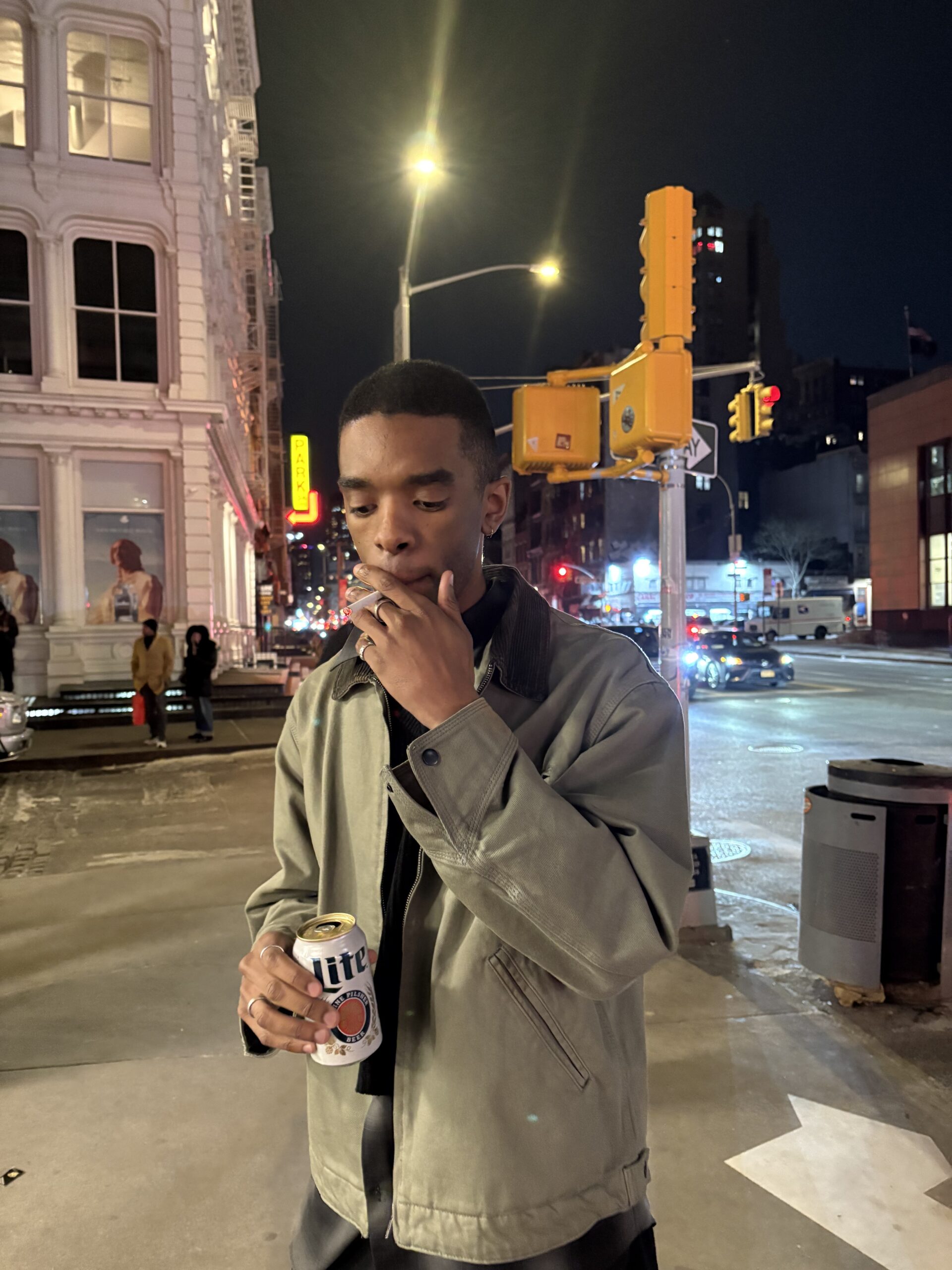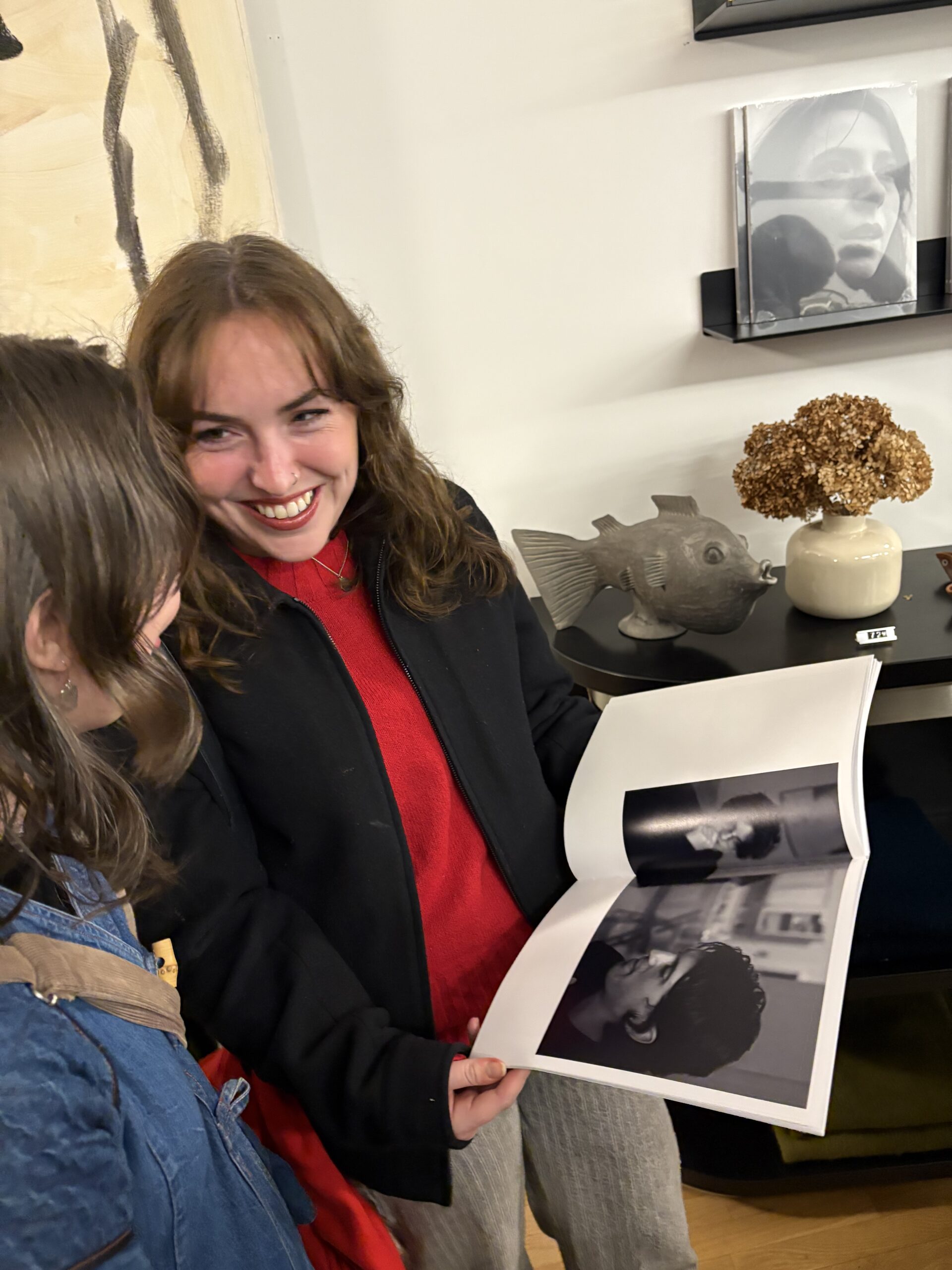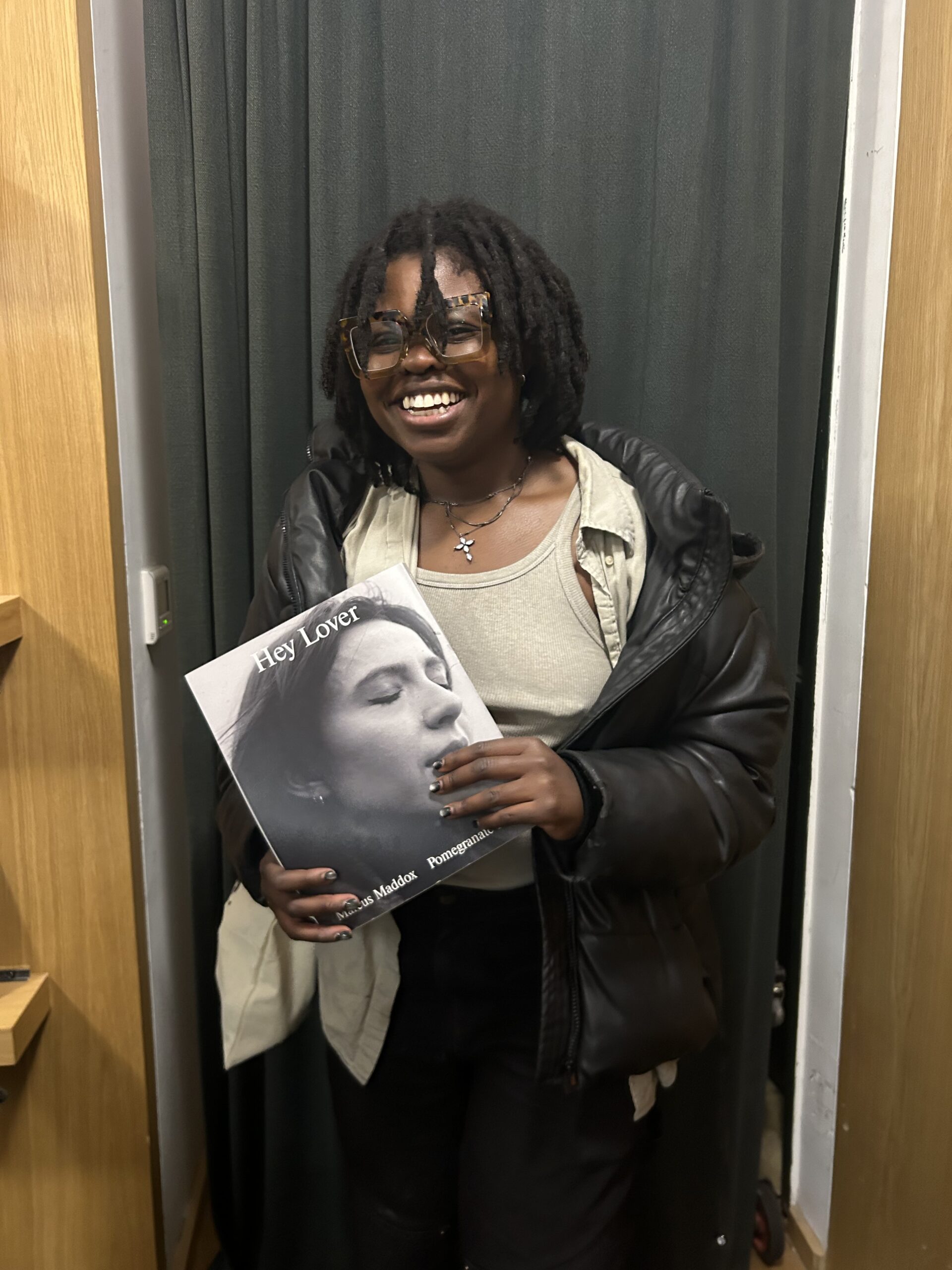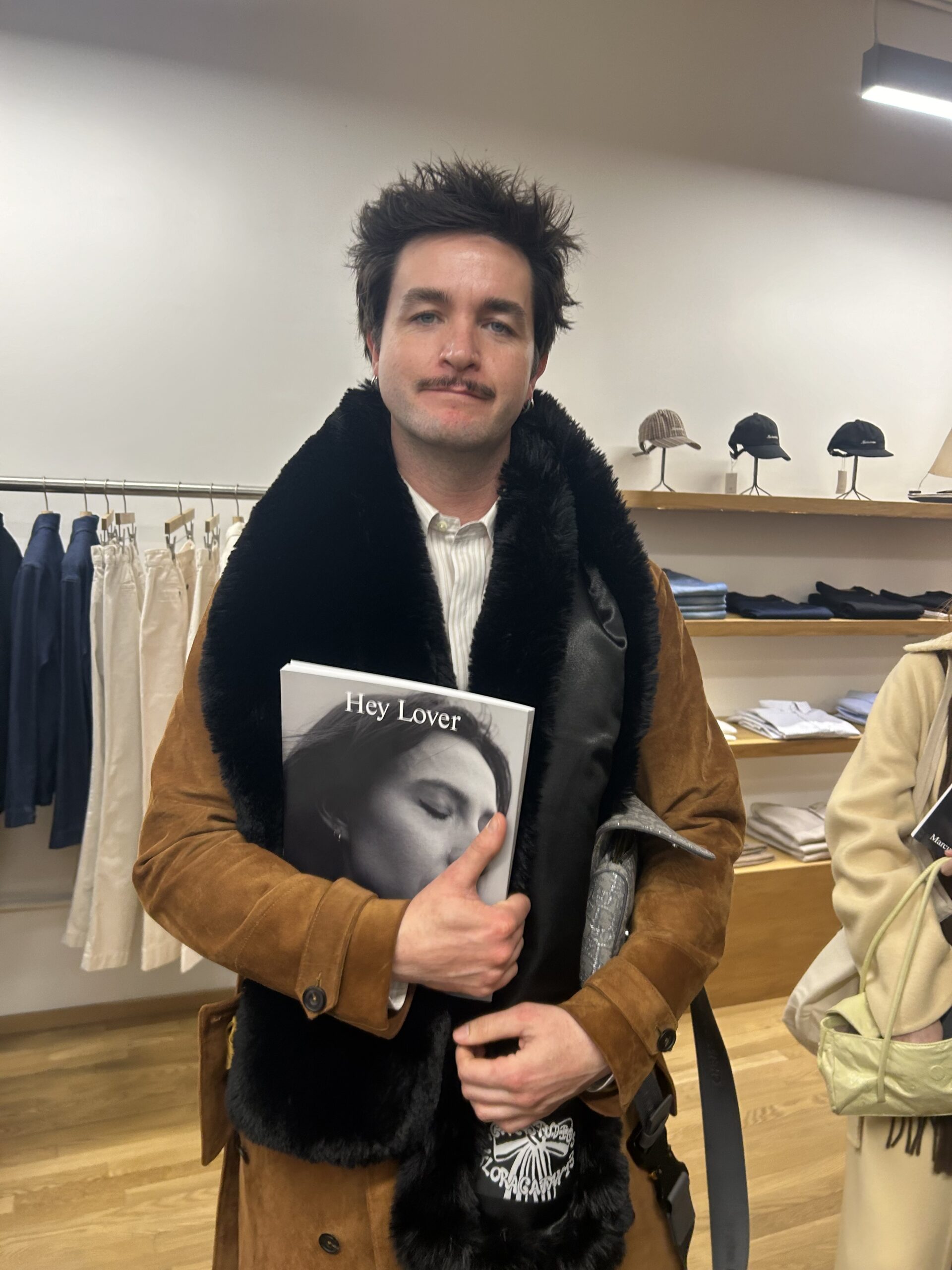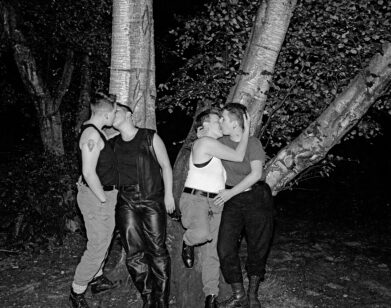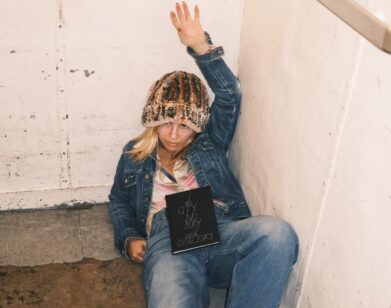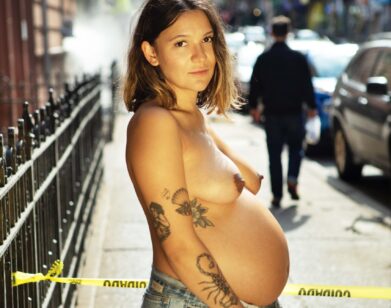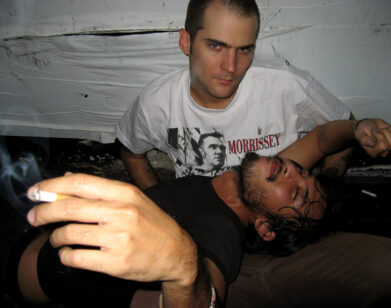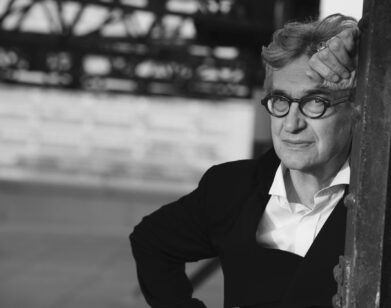SMOKE BREAK
“I’m the Melancholy Party Photographer”: Talking Love and Natural Light With Marcus Maddox
SATURDAY 7:46 PM FEBRUARY 22, 2025 DOWNTOWN
Last Saturday evening, Marcus Maddox, beloved photographer of New York’s DIY scene, held a book launch in celebration of his new monograph, Hey Lover. With influences ranging from 70s photographer Allen Frame to the lyrical cadence of poetry, Maddox is looking to transcend the the hyper-saturated, flash-forward style of party photography that’s remained fairly ubiquitous since the early 2000s. His moody black and white portraits instead capture the quiet, often bittersweet moments of connection and discord that occur in crowded rooms. “For me,” he says, “it was about trying to crawl back to this feeling of love that I had in a past relationship.” His work illuminates not just what’s seen, but what’s longed for. “I wanted to shoot personal stuff, capture the texture of my relationships.” When we stepped out of a room packed with faces familiar from the pages of Hey Lover, he joined me for a quick Smoke Break on Canal Street, where we discussed mentors, muses, and melancholy.
———
JULIETTE JEFFERS: We’re outside your book launch for your new book Hey Lover. Tell me a little bit about the process of putting it together.
MARCUS MADDOX: I started taking photographs more intuitively around 2017, and the oldest photograph in the book is from 2019, so that’s when I think I really found my voice. I knew I wanted to shoot personal stuff. I wanted to shoot relationships and capture the texture of my relationships, so I started doing that, and the work spans over five years, 2019 to 2024.
JEFFERS: There’s a really methodical quality to the way you put together the book and all the images. I’m curious about the sequencing of the book and how you started arranging these images.
MADDOX: So I took a class with Allen Frame, and he was definitely a mentor to me this last summer. He’s a New York 80s, 70s photographer.
JEFFERS: I feel like I see aspects of that in your work.
MADDOX: He was very influential on me, and he taught me how to see the specific details in my life and pull things from my life to make work out of it. His big thing was be specific, be specific about your memories, be specific about your emotions. So that was the editing process. The shooting, I was doing already. It was just what was naturally coming out of me. The sequence was very intentional. I learned some techniques from this artist Keith A. Smith, and he would talk about specific ways to sequence a visual book. I took a lot from poetry, too.
JEFFERS: Yeah. The titles of the images form this column of lyric poetry on the title page.
MADDOX: Yes. I wanted the book to flow and to have a rhythm, like a lyric poem. I wrote the titles in verse, and it’s a sequence around my ex-girlfriend. And so it begins with her, and then it ends with her, and then she carries the sequence along. She’s the most photographed in the book. She makes the most appearances.
JEFFERS: We’ve talked about this before, but the book feels like this physical representation of trying to figure out what love and intimacy is through this kind of voyeurism, where you’re witnessing these moments of connection and then disconnection.
MADDOX: For me, it was about trying to crawl back to this feeling of love that I had in a past relationship. And the absence of the kind of love and connection that I want in my life drove me to look out for it in other people, and to see that in other people, even if my perceptions were inaccurate or the images don’t actually reflect the realities of these relationships.
JEFFERS: You capture these really quiet moments of intimacy at these often chaotic parties. Even though a lot of the images in the book are from parties or outside of certain venues or whatever, it’s not typical party photography.
MADDOX: Right. And for that reason, I don’t really consider myself a party photographer, but I think it’s interesting because I draw a lot of inspiration from parties. So I’m technically a party photographer, but—
JEFFERS: Melancholy party photography.
MADDOX: I guess I would say I’m the melancholy party photographer. I’ve always thought that [Matt] Weinberger is like The Strokes, and I’m more like Elliott Smith.
JEFFERS: So what’s your favorite image in the book?
MADDOX: It’s a photograph that I’ve titled “She was me (a stab of chronic recognition).”
JEFFERS: Yeah, the Maggie Millner quote.
MADDOX: That’s my favorite image in the book, because it transcends the visual, what you’re seeing, what’s being represented. It’s a picture of a couple in the bathtub, and you see Lily, rubbing her eyes, but it almost looks as if that’s Lauren’s arm rubbing her eye.
JEFFERS: They look like they have almost the same arm, or like they have three arms between them.
MADDOX: Right. The reason I picked that line from that poem is because that poem, to me, when I read it, it makes you think about this uncanny sense of familiarity with your partner, this uncanny sense of unity, when you feel like you’re a part of them.
JEFFERS: Yeah. There’s a patience and a quality to what you’re looking for when you’re shooting. Do you think that has something to do with not using flash in these crowded, chaotic settings? You’re able to capture things that people might not even realize you’re capturing.
MADDOX: Oh, yeah. I wanted to embrace the darkness and the shadows. I think natural light is the best for this kind of work. On some level, with Hey Lover, I wanted to say something about unhappiness. It starts out with young, sexy people in love, very blissful. But then it progresses into this sequence of unhappiness. And there’s this friction and this conflict in the book.
JEFFERS: Totally. There’s a sense of feeling alone in a crowded room.
MADDOX: Yeah there’s a balance. The cover is also very much part of the sequence itself. On the front, she’s opening her eyes and she’s crying, and as you flip the book over, she’s closing her eyes. And then the first photograph is of my ex and she’s shutting her eyes. And then the last photograph in the book is her looking right at me. It feels very cyclical.

